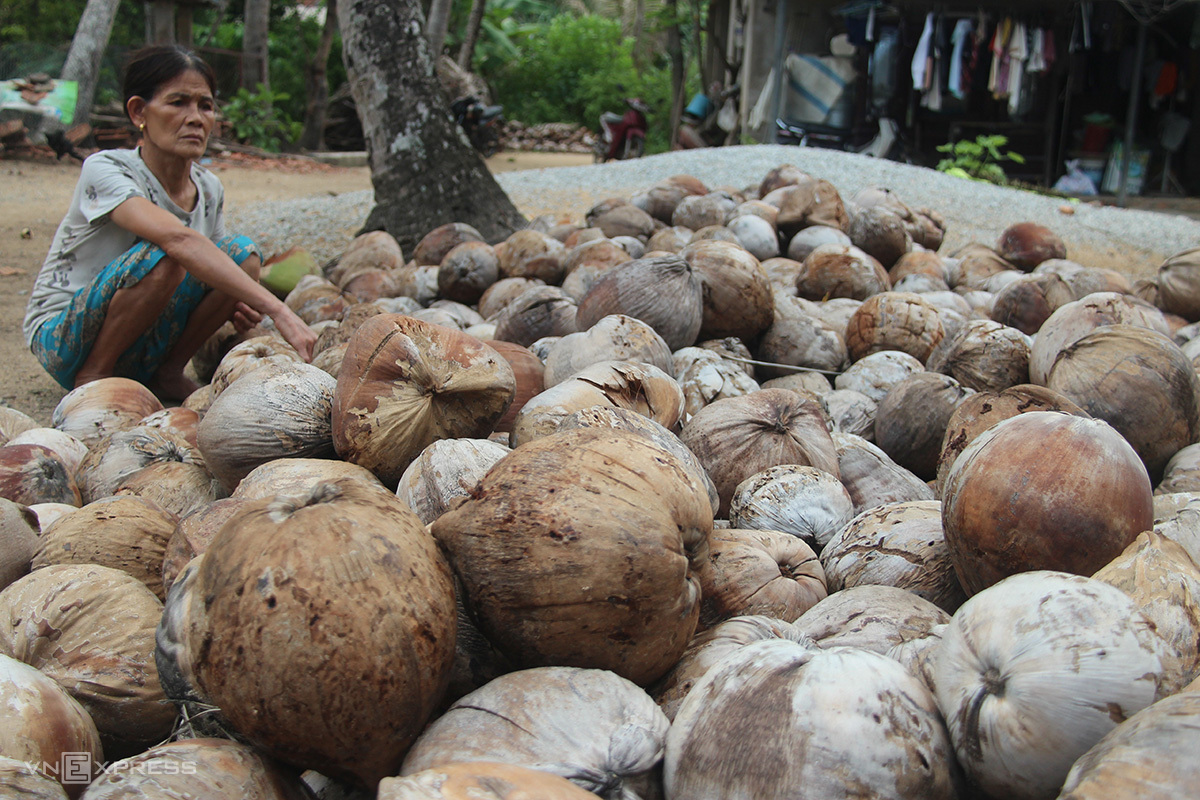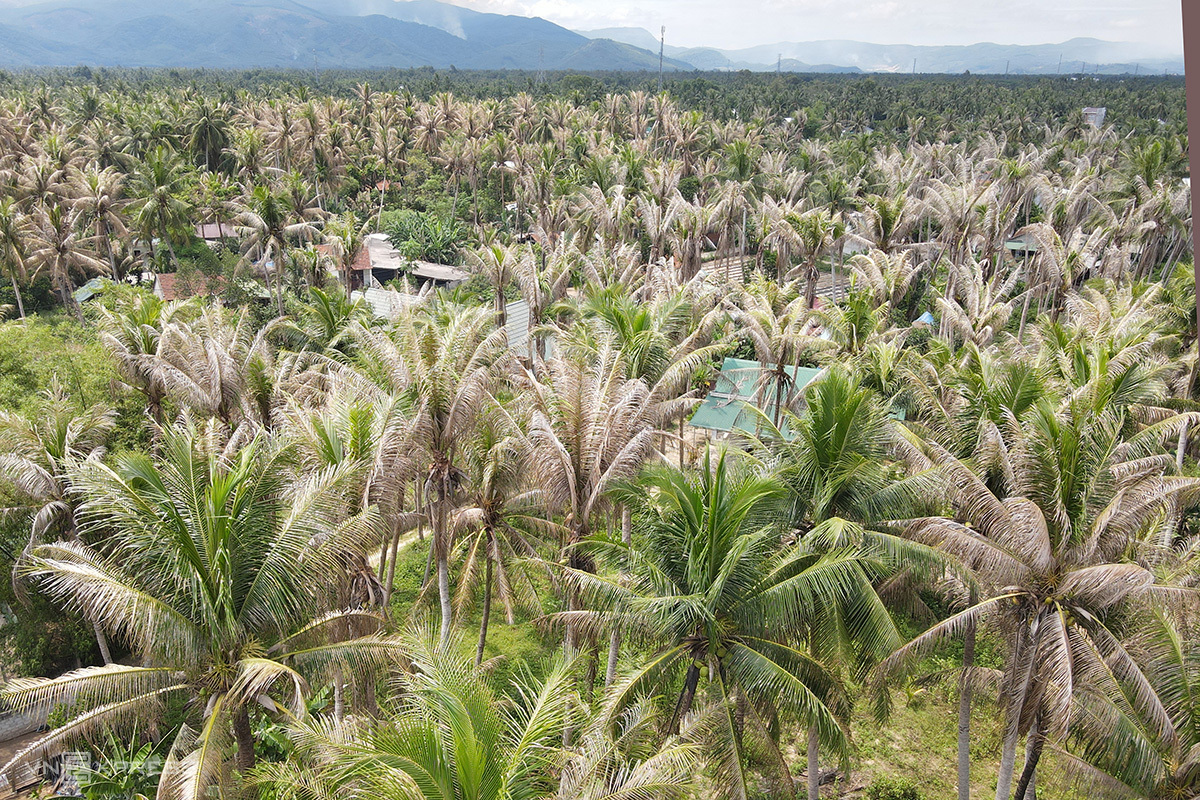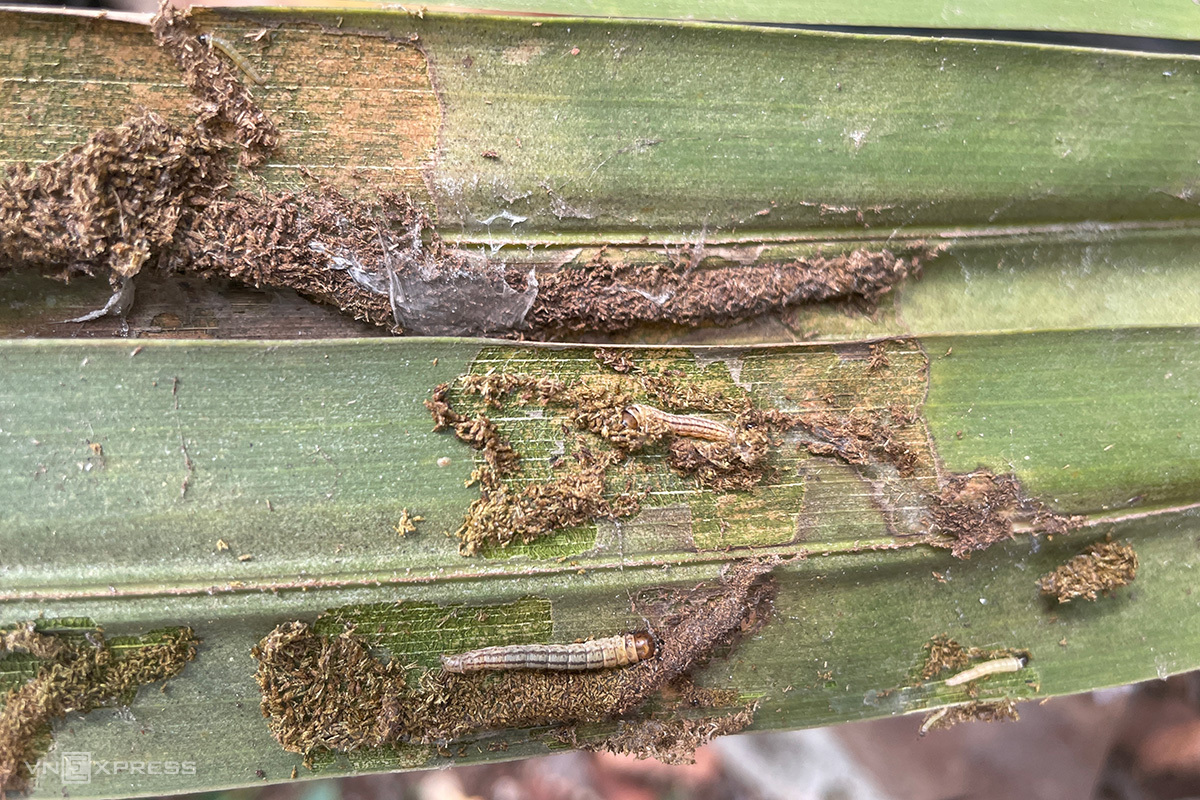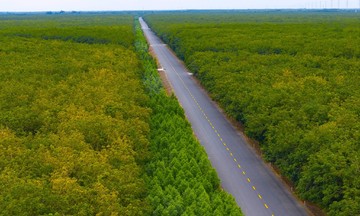On 1/9, in Cu Tai 1 village (Hoai Nhon Tay), 65-year-old Nguyen Thi La and her husband collected dried coconuts that had fallen in their garden to feed their chickens. "The caterpillars not only eat the leaves but also bore into both young and mature fruit," she said.
 |
Hundreds of coconuts have fallen due to black-headed caterpillars. Photo: Tran Hoa |
Mrs. La's garden has over 70 coconut trees that are more than 50 years old. Previously, each harvest yielded 10-15 million VND. For the past few months, many trees have experienced leaf scorching and wilting, which has spread rapidly. By the time the black-headed caterpillars were discovered, most of the trees were severely infested, dozens had died, and hundreds of coconuts had fallen, resulting in significant losses.
Many households have resorted to cutting down infested leaves or even entire trees to burn them as a preventative measure, but this method has proven ineffective. While spraying pesticides is possible for younger, shorter coconut trees, treating taller ones in established groves poses a challenge. "A coconut tree takes five years to bear fruit and provides a stable income for 20 years. With a price of 15,000 VND per coconut, each tree generates 500,000-800,000 VND annually. Losing these trees means losing their livelihood," Mrs. La explained.
Statistics reveal that black-headed caterpillars have damaged nearly 2,000 coconut trees, concentrated mainly in Hoi An neighborhood (Tam Quan) and Cu Tai 1 village (Hoai Nhon Tay), affecting over 1,500 trees in these areas.
 |
Nearly 2,000 coconut trees have been devastated by black-headed caterpillars. Photo: Tran Hoa |
The black-headed caterpillar (scientific name Opisina arenosella Walker) is native to India and Sri Lanka and is currently found in 16 countries. They feed on the inner epidermis of leaves, causing trees to weaken, reducing productivity, and even leading to death. This species is small, reproduces rapidly, and spreads quickly.
Leaders of Tam Quan ward reported that the area has over 400 hectares of coconut trees, and this is the first time this caterpillar species has appeared. The gardens are located within residential areas, and the trees are tall, making it difficult to spray pesticides from the top. Using strong chemicals would harm the environment, the health of residents, and livestock.
The Gia Lai Department of Agriculture and Rural Development has directed efforts to contain the outbreak, destroy severely infested trees, and guide residents in using bio-pesticides to minimize environmental impact. Local forces have also been mobilized to assist in controlling the spread.
 |
Black-headed caterpillars feed on the inner epidermis of leaves, weakening trees, reducing productivity, and even causing death. Photo: Tran Hoa |
Gia Lai currently has over 9,000 hectares of coconut trees, with an average yield of 119.3 quintals/ha and an annual output of over 111,000 tons. Coconut is a key crop in many coastal and riverside areas, and now faces the threat of decline due to this new pest.
Tran Hoa












